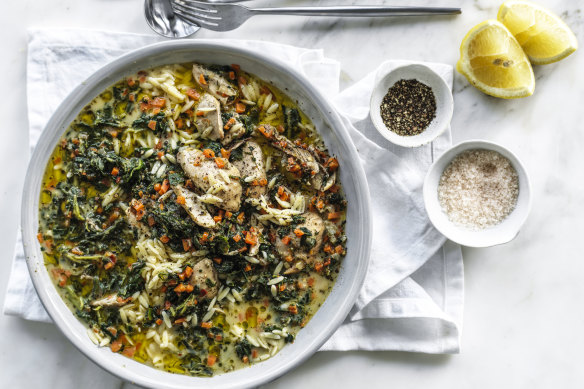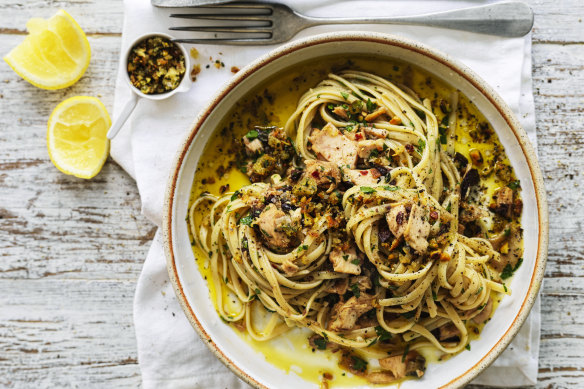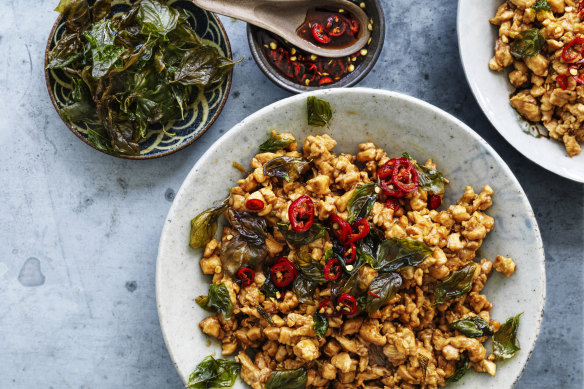Five dietitian-approved supermarket swaps that will save you money (and still taste good)
Struggling with the cost of nutritious ingredients such as extra virgin olive oil and heart-healthy fish right now? Here are a few simple ways to eat healthily without blowing your grocery budget.
Chances are you’ve noticed that your grocery bill has increased significantly over the past year or two. If one of your goals is to eat as healthy a diet as possible, it can be tricky to balance the demands of a budget with good-quality, nutrient-rich foods.
The good news is that there are a handful of supermarket foods that combine a low price point with a concentrated source of nutrients you can find in few other foods. These simple swaps will combine the best of both worlds.

Swap: Green vegies for frozen
Why: It is a commonly held belief that fresh is best when it comes to fruits and vegies. But it may come as a surprise to hear that as frozen vegies are snap frozen at time of harvest, they actually have higher amounts of key nutrients including vitamin C, beta-carotene and a number of antioxidants. This means that when broccoli, kale, green beans and spinach are upwards of $7-$8 kilo, and you are also paying for stalks and parts of the vegetable you will remove, you are nutritionally and financially better off to grab frozen options.
Best buys: Frozen beans, $2.80/kg, Coles; Natures Nutrients Frozen Chopped Spinach, $1/250g, Coles; Bell Farms Chopped Spinach, 95c/250g, Woolworths
Swap: Breakfast cereal for oats
Why: There’s a wide range of nutritious breakfast cereals that offer whole grains, protein, dietary fibre and a number of key nutrients. But let’s be honest, you certainly pay for them with a box of high-quality cereal or granola costing upwards of $9-$11 per kilo. If you then consider that plain whole oats clock in at less than $2 per kilo, and are one of the best breakfast options you can pick nutritionally, why spend so much more on a more processed cereal when you can enjoy a bowl of warming oats for just a few cents per serve?
Best buys: Woolworths Traditional Rolled Oats, $1.60/750g; Coles Rolled Oats, $1.90/900g

Swap: Fresh fish for canned
Why: It is recommended that we consume at least two fish serves each week to support heart health. But when it comes to cost, fresh fish can certainly be pricey. While canned fish has also increased in price, you can still find canned tuna and sardines that cost just $2-$3 per 100g-180g serve, or the equivalent of 15g-25g of good-quality protein. This means that a meal of sardines on toast, tuna burgers or pasta or grilled kippers can be a cost-effective way to keep your fish and omega 3 intake on track.
Best buys: Deep Cove Sardines in Springwater, 90c/125g, Woolworths; Seacrown Sardines, 90c/125g, Coles; Coles Tuna Chunks in Springwater, $2.20
Swap: Olive oil for spray
Why: When it comes to the best oil for cooking, you can’t go past extra virgin olive oil for the unique health benefits, courtesy of its extremely high natural antioxidant content. But the current high prices mean that it may now only be your go-to for dressings rather than day-to-day cooking. For a reasonable, cost-effective swap, there is no need to feel guilty for grabbing a spray olive or canola oil for basic frying and stove-top cooking until extra virgin olive oil prices stabilise again.
Best buys: Woolworths Extra Virgin Olive Oil Spray, $3.70; Coles Canola Cooking Oil Spray, $4

Swap: Chicken breast for chicken mince
Why: Not only is chicken breast extremely lean, it’s also very affordable, which makes it one of the most versatile lean protein sources available. When budgets are tight, a small amount of lean mince goes a long way, as it can be bulked out with vegetables and made into a number of meals, including pasta sauces, burgers and meatballs, for a lot less than the equivalent amount of chicken breast or tenderloin.
Best buys: $13/kg, Coles; $11/kg ,Woolworths
